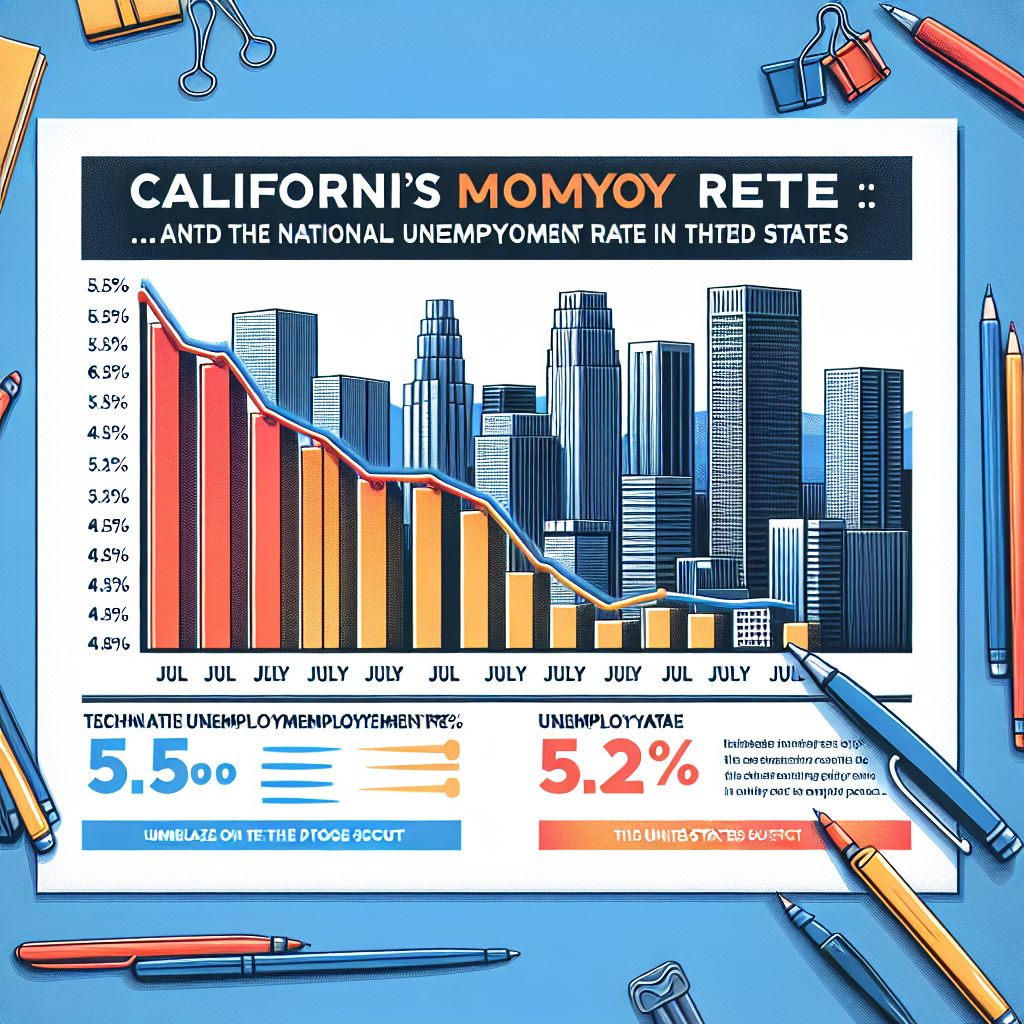California’s unemployment rate climbed to 5.5% in July, ranking the highest among all states in the US, significantly above the national average of 4.2%. This increase is attributed to the weakened job market in the state’s technology sector and other office positions, as well as the continued dismal recruitment market.
According to data from the California government, the state added a net of 15,000 jobs in July, with the unemployment rate rising by 0.1 percentage points compared to June, reaching the highest level since December 2024.
The unemployment rate is calculated based on a survey of 4400 households in California. The survey found that although overall employment increased, the number of job seekers increased by around 18,200 in July compared to June. Revised data also shows a net loss of 9,500 jobs in June.
Michael Bernick, former head of the California Employment Development Department, stated that job seekers in the technology industry are facing the most challenging job market in years, especially recent graduates and some entry-level employees.
Bernick pointed out that artificial intelligence is replacing some jobs that traditionally required entry-level employees, while tech companies are also cutting positions that were over-recruited during the COVID pandemic.
The two strongest industries in terms of employment growth in California are healthcare and private education sectors. In July, these two sectors added 23,100 jobs, followed by the state government sector adding 7,200 jobs.
This employment news sparked discussions on IT employment in the Hacker News community. Many netizens expressed that the aftermath of remote work and the end of the era of cheap funds have contributed to the job difficulties in the US IT industry.
In Silicon Valley, major companies are bidding farewell to reckless spending. Many tech executives and investors attribute this era to the era of cheap funds – the zero interest rate policy (ZIRP) that lasted from around 2008 to 2021.
In 2008, the world economy plunged into a deep recession and slowly began to recover. The Federal Reserve kept short-term interest rates at near-zero levels for many years and injected trillions of dollars into the financial system in an attempt to stimulate investment and employment, with little success.
As the US economy was severely impacted during the 2020 pandemic, the Federal Reserve repeated this strategy and then began to rapidly raise interest rates above 4.5% in 2022. Currently, the US federal benchmark interest rate remains at 4.5%.
High-tech companies have strongly felt the changes in borrowing costs and swiftly opted to cut off some poor business decisions and initiate layoffs.
During the years 2012-2022, computer science programs in major universities significantly expanded, coding boot camps flourished, and with the influx of technical immigrants, the supply of software engineers sharply increased over a decade. However, with the ebbing of capital, the demand side (especially startups) drastically shrank, leading to a severe talent surplus.
Industries that also heavily rely on long-term high-risk investments, such as biotechnology, have suffered greatly. These industries are even more dependent on cheap capital than the software industry. With the end of the zero interest rate era, the funds for venture capital are gradually drying up, and many startups, after exhausting their runway funds, struggle to secure new rounds of financing, leading to layoffs or closures.
The widespread adoption of remote work due to the COVID-19 pandemic, initially seen as a benefit for IT professionals, has led to companies realizing starting from 2022 that they can outsource positions to lower-cost foreign countries.
With foreign salaries demanding only 1/5 of what American engineers earn, and being equally competent and willing to work hard without complaints, there is no distinction for companies between onsite and remote workers.
Some netizens suggested that the technology companies’ “Return to Office” (RTO) policy, to some extent, aims to protect local jobs. Once it is proven that a job can be 100% remote, it can be done from anywhere globally, erasing the salary advantage of American engineers.
Some netizens compared the technology industry to the decline of America’s manufacturing “Rust Belt”. Just as the US outsourced manufacturing to China years ago, now IT and software development jobs are massively flowing to India, Latin America, and Eastern Europe, which could lead to the long-term structural unemployment of once high-paying software engineers.
On the other hand, if a large number of middle-class tech jobs vanish, it could trigger new social and political issues, much like how the decline of the “Rust Belt” continues to influence the American political landscape.
As an immigrant country, IT is also a major user of work visas like H-1B. Some netizens believe that H-1B visas are being abused, depressing the salaries of local engineers and exacerbating competition. Others staunchly defend technical immigration, believing that these top talents from around the world form the foundation of Silicon Valley’s innovation.
Every year, tens of thousands of foreign students travel to the US to study computer science and other tech disciplines. The most outstanding among them can secure entry-level positions at tech companies, transitioning to H-1B visas after their student visas expire.
Among the tech giants, Amazon has the highest number of approved H-1B visas, followed by Google, Meta, Microsoft, and Apple.
A study by the National Foundation for American Policy in 2018 found that over half of US startups valued at over $1 billion had immigrant founders or co-founders: the CEOs of Microsoft, Google, Uber, and Nvidia are all immigrants.

